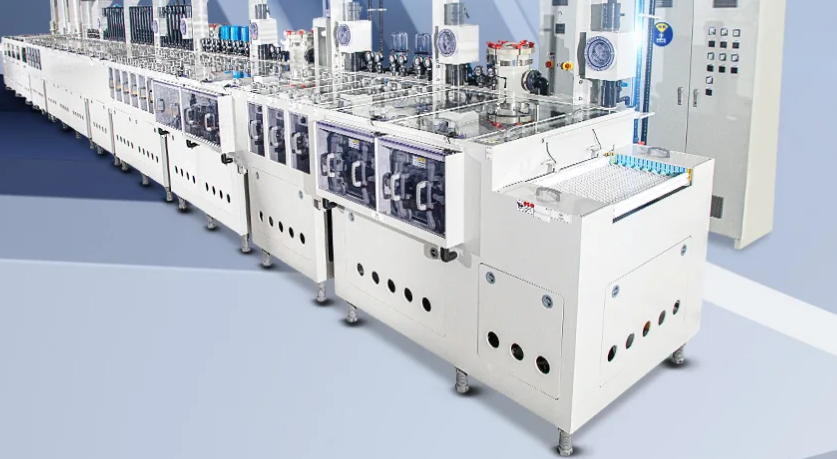When using the pcb surface treatment system, the following several factors need to be particularly noted:
Design and plate-making accuracy
When designing the drawings, factors such as the symmetry of the patterns, the thickness of the lines, and the spacing should be taken into consideration to ensure that the etching effect meets the requirements.
The plate-making precision should be high to ensure a good fit between the mask plate and the stainless steel surface, avoiding deformation of the pattern or text.
Material selection and quality
High-quality stainless steel materials such as 304 and 316 should be selected, as these materials have excellent corrosion resistance and mechanical properties.
The surface of the material should be clean, smooth, free of oil stains, dust and other contaminants; otherwise, it will affect the etching effect.
Preparation and concentration of etching solution
The composition and concentration of the etching solution have a significant impact on the etching effect and should be prepared according to the required etching depth and speed.
The etching solution should be replaced or replenished regularly to maintain its stability and etching effect.
Etching condition control
The conditions such as etching time, temperature and pressure are controlled to achieve the required etching depth and uniformity.
During the etching process, the concentration and temperature of the etching solution should be regularly checked and necessary adjustments made.
Mask protection and removal
The mask should be closely attached to the stainless steel surface to prevent the etching solution from seeping beneath the mask and causing deformation of the pattern or text.
After etching is completed, the mask should be easy to remove and should not leave any residue or damage the stainless steel surface.
Cleaning and drying
After etching is completed, the etching solution on the surface of the stainless steel should be rinsed clean with clear water in a timely manner to prevent the residue from causing corrosion or pollution to the surface of the stainless steel.
After cleaning, a drying process should be carried out to prevent water stains from remaining and causing rust or discoloration on the surface of the stainless steel.
Quality inspection and subsequent processing
Conduct quality inspection on the etched stainless steel products to ensure the clarity, integrity and accuracy of the patterns or characters.
Subsequent treatments such as polishing, coloring and electroplating are carried out as needed to enhance its aesthetic appeal and durability.
Environmental Protection and Safety
During the etching process, environmental protection regulations should be strictly followed, and the waste etching solution and wastewater should be properly handled to avoid environmental pollution.
Operators should wear appropriate protective equipment, such as gloves, masks and goggles, to prevent the etching solution from causing harm to the skin and eyes.
To sum up, when using the pcb surface treatment system, special attention should be paid to factors such as design and plate making accuracy, material selection and quality, preparation and concentration of etching solution, control of etching conditions, mask protection and removal, cleaning and drying, quality inspection and subsequent processing, as well as environmental protection and safety. These factors jointly affect the quality and safety of the etching effect.
pcb surface treatment system https://www.jxxr-pcb.com/Tin-Spraying-Pre-processing-Machine.html

